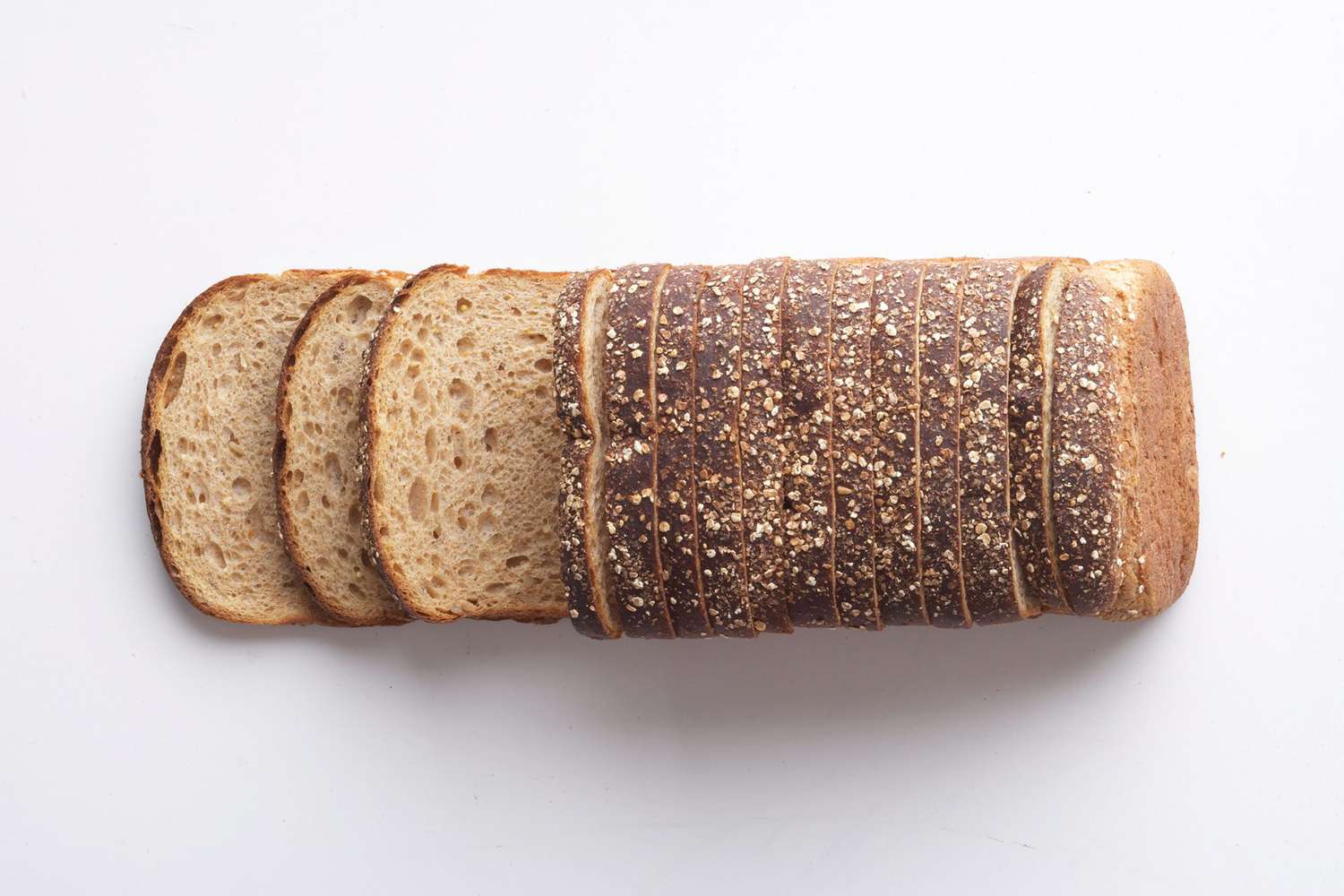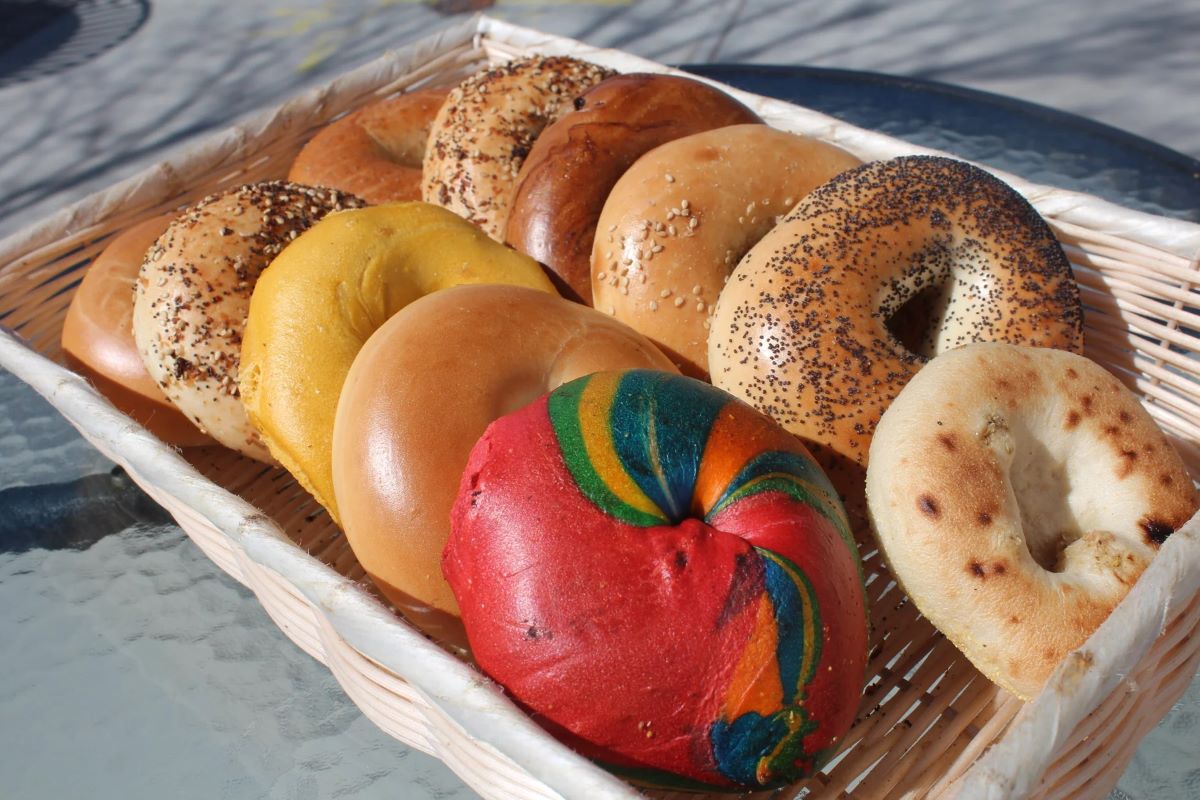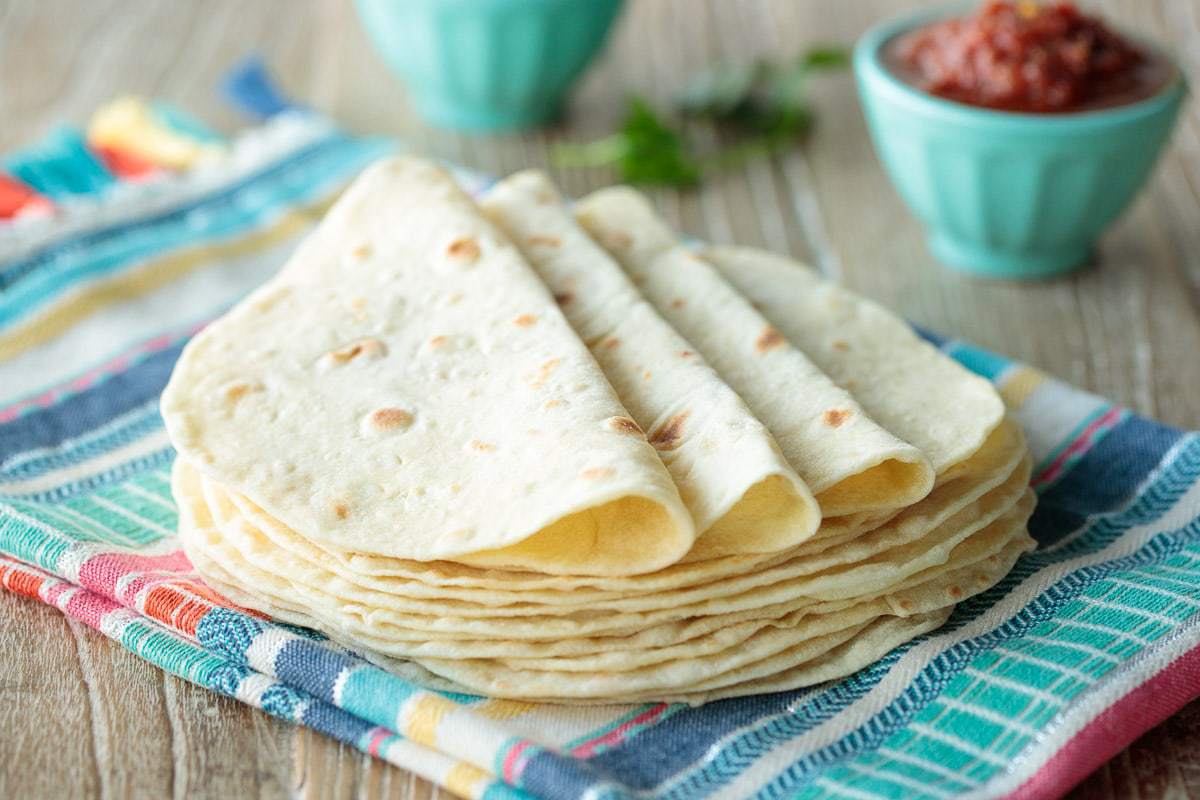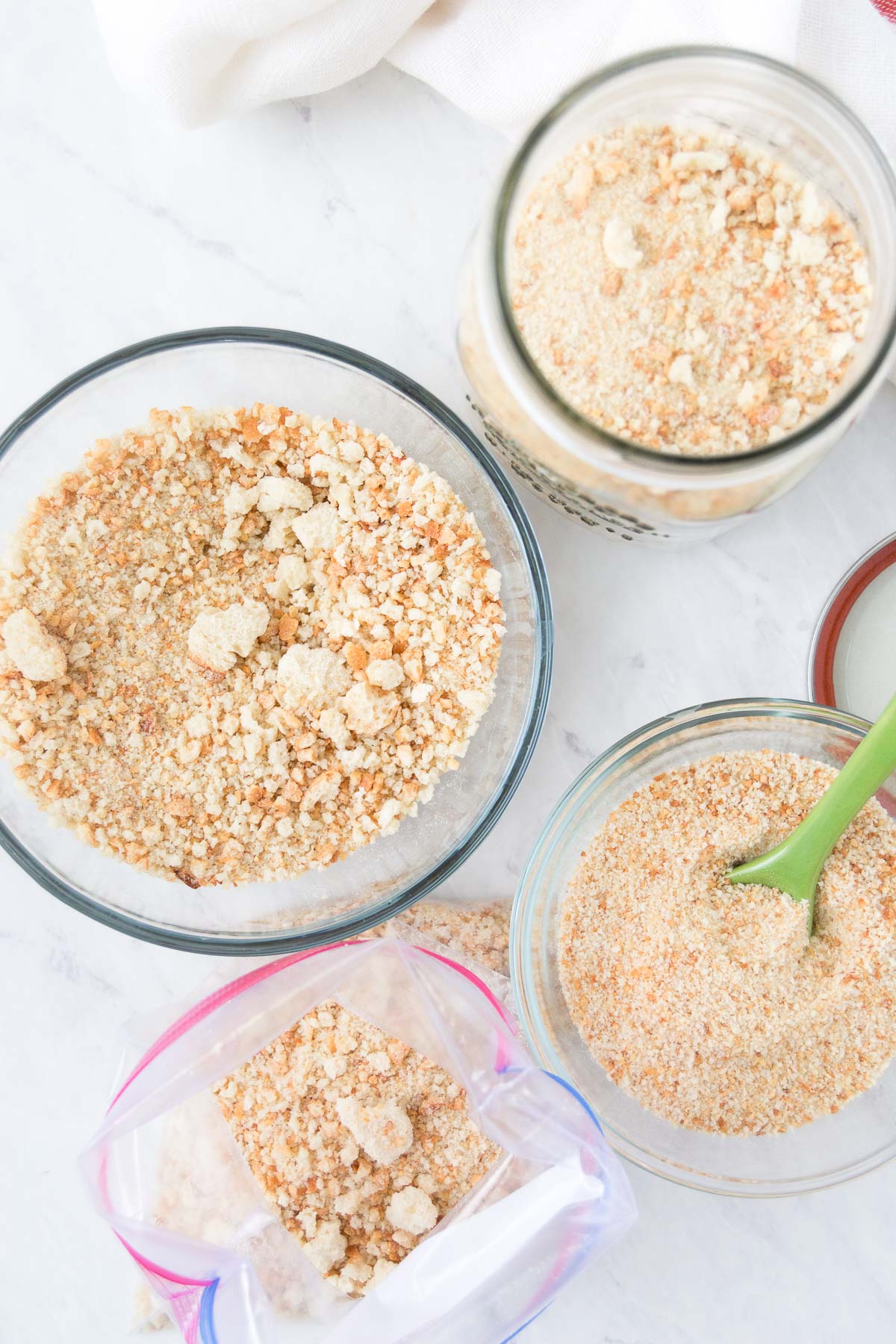

Articles
How To Store Fresh Bread To Keep It Fresh
Modified: February 23, 2024
Learn effective methods to store and preserve the freshness of your bread. Read our informative articles on bread storage techniques and keep your loaves tasting delicious for longer.
(Many of the links in this article redirect to a specific reviewed product. Your purchase of these products through affiliate links helps to generate commission for Storables.com, at no extra cost. Learn more)
Introduction
Welcome to the wonderful world of freshly baked bread! There’s nothing quite like the scent of warm, crusty bread straight out of the oven. Biting into a slice of freshly baked bread is a simple pleasure that can bring immense joy.
However, as anyone who has ever baked or bought bread knows, keeping it fresh for an extended period of time can be a challenge. Stale or dry bread can quickly ruin a meal or snack, leaving you feeling disappointed and frustrated.
But fear not! In this article, we will explore the various methods and techniques for storing fresh bread to help you keep that just-baked goodness for longer.
Key Takeaways:
- Proper bread storage is crucial for maintaining freshness, texture, and flavor. Choose the right container, consider wrapping in paper, and store in a cool, dry place to extend the shelf life of your bread.
- Freezing bread is an effective method to preserve freshness. Properly wrap and label the bread before freezing, and consume within the recommended timeframe for best quality.
Read more: How To Store Bagels To Keep Them Fresh
Why is Proper Bread Storage Important?
You may be wondering why it’s necessary to pay attention to how you store your bread. Well, proper bread storage is essential for several reasons:
- Prolongs freshness: Storing bread correctly helps extend its shelf life, allowing you to enjoy it at its best for longer.
- Preserves texture: Improper storage can lead to a loss of moisture in the bread, resulting in a dry and unappetizing texture.
- Prevents mold: Mold is bread’s worst enemy. By storing bread properly, you can minimize the risk of mold growth and avoid wastage.
Now that we understand the importance of proper bread storage, let’s dive into the different methods to ensure your bread stays fresh.
Key Takeaways:
- Proper bread storage is crucial for maintaining freshness, texture, and flavor. Choose the right container, consider wrapping in paper, and store in a cool, dry place to extend the shelf life of your bread.
- Freezing bread is an effective method to preserve freshness. Properly wrap and label the bread before freezing, and consume within the recommended timeframe for best quality.
Read more: How To Store Bagels To Keep Them Fresh
Why is Proper Bread Storage Important?
Proper bread storage is essential for maintaining the freshness, texture, and flavor of your favorite loaf. Here are a few reasons why paying attention to proper bread storage is crucial:
Prolongs Freshness
Storing bread correctly helps extend its shelf life and keeps it fresh for longer. Bread that is exposed to air or stored improperly can quickly become stale, losing its delightful softness and chewy texture. The right storage method will help preserve the moisture content, keeping the bread fresh and enjoyable for an extended period.
Preserves Texture
Nothing is more disappointing than biting into a slice of bread that has lost its softness and has become dry and crumbly. Proper storage can help preserve the texture of the bread, ensuring that every bite is as delightful as the first. By protecting the bread from the elements and preventing it from drying out, you can maintain that perfectly chewy and moist texture.
Read more: How To Store Muffins To Keep Them Fresh
Prevents Mold Growth
Mold is the enemy of fresh bread. It can quickly develop on bread that is exposed to moisture or stored in a damp environment. Mold not only ruins the taste and texture of the bread but also poses a health risk. By storing bread properly, you can minimize the risk of mold growth and enjoy your bread without any unpleasant surprises.
Minimizes Food Waste
Improper storage often leads to wasted food. If you don’t store your bread correctly, it can go stale or moldy before you have a chance to finish it. This results in unnecessary waste and can be frustrating, especially if you’ve spent time and effort baking or purchasing high-quality bread. By following proper storage techniques, you can minimize food waste and get the most out of your bread.
Now that we understand the importance of proper bread storage, let’s explore some effective methods to keep your bread fresh for longer.
Choosing the Right Container
When it comes to storing bread, choosing the right container is crucial to maintain its freshness and texture. Here are a few options to consider:
Bread Box
A bread box is a classic and practical storage solution for keeping bread fresh. These containers are designed specifically to protect bread from air and moisture, creating an optimal environment for storage. Look for a bread box with ventilation holes to prevent excessive moisture buildup, which can lead to mold growth. Bread boxes come in various sizes and styles, so choose one that suits your needs and complements your kitchen decor.
Read more: How To Store Fudge To Keep It Fresh
Airtight Container
If you prefer a more modern approach, an airtight container can also be a great option. Ensure that the container you choose has a tight-fitting lid to seal out air and moisture. This will help prevent the bread from drying out and keep it fresh for longer. Transparent containers allow you to easily see the bread inside, making it convenient to check its freshness without opening the container.
Plastic Bags
Plastic bags are a simple and cost-effective way to store bread. Opt for thick, food-grade plastic bags that are large enough to accommodate the bread. Place the bread in the bag and gently squeeze out any excess air before sealing it. Remember to twist-tie or clip the bag securely to maintain freshness. While plastic bags are not as aesthetically pleasing as bread boxes or airtight containers, they are practical and can effectively keep bread fresh.
Bread Drawer
If your kitchen has a dedicated bread drawer, take advantage of it! Bread drawers are often designed to provide the ideal storage conditions for bread. They are typically located away from heat sources and have better insulation, helping to maintain proper temperature and humidity levels. If you have a bread drawer, make sure to clean it regularly and remove any crumbs or debris that may affect the freshness of your bread.
Remember, the key is to choose a container that provides protection against air and moisture, while also allowing the bread to breathe slightly. Experiment with different storage options to find the one that works best for you and keeps your bread fresh and delicious.
Wrapping Bread in Paper
Wrapping bread in paper is a traditional method that has been used for centuries to keep bread fresh. It provides a breathable and protective layer that helps maintain the moisture and texture of the bread. Here’s how you can wrap bread in paper:
Read more: How To Store Celery To Keep It Fresh
Choose the Right Type of Paper
When wrapping bread in paper, it’s important to choose the right type of paper. Look for food-grade, uncoated parchment or wax paper. These types of paper allow the bread to breathe while still offering a protective barrier against moisture loss.
Wrap the Bread Securely
Gently place the loaf of bread on a sheet of paper that is large enough to completely wrap it. Start by folding one side of the paper over the bread, tucking it under the bottom. Then, fold the remaining sides over the bread to create a secure package. Make sure the paper is snug but not too tight to avoid squishing the bread.
Seal the Ends
To keep the bread fresh, seal the ends of the paper package. You can do this by folding the excess paper at the ends and tucking it under the package. Alternatively, you can use a piece of string or a twist tie to secure the ends of the paper. This will help maintain the freshness of the bread and prevent air and moisture from entering.
Store in a Dry Place
Once the bread is wrapped securely in paper, find a cool, dry place to store it. Avoid areas with excess humidity or direct sunlight, as these can accelerate the staleness or mold growth of the bread. A pantry or cupboard away from the stove or refrigerator is typically a good spot.
Read more: How To Store Cilantro To Keep It Fresh
Check and Refresh
Periodically check on the bread to ensure it remains fresh. If you notice any signs of staleness or moisture buildup, unwrap the bread, discard the old paper, and wrap it in fresh paper. This will help maintain the best possible freshness for your bread.
Wrapping bread in paper is a time-tested method that can help extend the shelf life of your freshly baked loaf. It not only keeps the bread fresh but also adds a charming, rustic touch to its presentation. Give it a try and enjoy delicious, moist slices of bread for longer.
Storing Bread in a Bread Box
If you’re looking for a convenient and stylish way to store your bread, a bread box is an excellent option. A bread box provides a dedicated space for your bread, protecting it from air and moisture while keeping it easily accessible. Here’s how to effectively store your bread in a bread box:
Choose the Right Bread Box
When selecting a bread box, consider the size and design that will best suit your needs. Opt for a bread box that has enough space to accommodate your bread loaf or rolls without squishing them. Look for a box made of materials that are moisture-resistant, such as stainless steel or bamboo, to help maintain the freshness of your bread.
Place the Bread Loaf or Rolls Inside
Gently place your bread loaf or rolls inside the bread box. If you have multiple baked goods, arrange them carefully to avoid squishing or damaging any of the items. Do not overcrowd the bread box, as this can restrict proper air circulation and lead to moisture buildup. Ideally, allow some space for the air to flow around the bread.
Read more: How To Store Lettuce To Keep It Fresh
Close the Lid
Once the bread is inside the bread box, securely close the lid. The lid helps create a sealed environment that protects the bread from excess moisture and air exposure. Make sure the lid fits tightly to maintain the ideal conditions for bread storage.
Store in a Cool, Dry Place
Find a suitable location for your bread box in your kitchen. Choose a spot away from direct sunlight and heat sources to prevent the bread from drying out or becoming stale quickly. Ideally, store the bread box in a cool, dry place, such as a pantry or countertop away from the stove or oven.
Frequent Cleaning is Key
Regularly clean your bread box to keep it hygienic and prevent any buildup of crumbs or moisture that could affect the freshness of your bread. Wipe down the interior and exterior with a damp cloth and mild soap as needed. Allow the bread box to dry thoroughly before returning the bread to it.
Storing bread in a bread box offers a convenient and stylish solution for keeping your bread fresh. It not only helps maintain the texture and taste but also adds a charming touch to your kitchen decor. By following these simple steps, you’ll be able to enjoy delicious, freshly baked bread for longer periods.
Using a Bread Bag or Cloth
If you prefer a more traditional approach to storing bread, using a bread bag or cloth can be a practical and effective method. These options provide a breathable yet protective barrier that helps maintain the freshness of your bread. Here’s how to use a bread bag or cloth to store your bread:
Read more: How To Store Fresh Focaccia
Choose a Bread Bag or Cloth
First, you’ll need to acquire a bread bag or cloth specifically designed for storing bread. These can often be found at kitchen supply stores or online. Look for bags or cloths made of natural, breathable materials that allow air to circulate while protecting the bread from external elements.
Place the Bread Inside
Take your freshly baked bread loaf or rolls and place them gently inside the bread bag or on the cloth. Avoid squishing or pressing down on the bread to maintain its shape and texture. If you have multiple bread items, consider keeping them separate to prevent them from sticking together.
Tie or Seal the Bag
For a bread bag, secure the open end by tying it with a twist tie or a clip. Make sure the bag is sealed tightly to prevent air and moisture from entering. If you’re using a cloth, fold the sides over the bread and tie it with a string or wrap it tightly with a rubber band. This will create a snug and protective covering for your bread.
Store in a Cool, Dry Place
Find a suitable location to store the bread bag or cloth. Ideally, choose a cool, dry spot in your kitchen away from direct sunlight or heat sources. A pantry or countertop away from the stove or oven is generally a good option. Avoid areas with excessive humidity, as this can cause moisture buildup and affect the freshness of the bread.
Read more: How To Store Cilantro To Keep It Fresh
Check and Refresh
Periodically check on the bread to ensure it remains fresh. If you notice any signs of staleness or moisture buildup, unwrap the bread, discard the old bag or cloth, and replace it with a fresh one. This will help preserve the quality and flavor of your bread.
Using a bread bag or cloth is a traditional and reliable method of storing bread. It allows the bread to breathe while providing protection against external elements. By following these steps, you can extend the shelf life of your bread and enjoy it at its best.
Freezing Bread for Extended Freshness
If you have more bread than you can consume within a few days, freezing it is a fantastic method to preserve its freshness for an extended period. Freezing bread helps maintain its flavor, texture, and moisture content until you’re ready to enjoy it. Follow these steps to freeze bread effectively:
Cool the Bread Completely
Before freezing your bread, ensure that it has cooled down completely. If you try to freeze bread while it’s still warm, condensation can form inside the packaging, leading to an unpleasant texture and potential freezer burn. Allow your bread to cool on a wire rack for at least a couple of hours before proceeding.
Wrap the Bread Properly
Proper packaging is essential to prevent freezer burn and maintain the bread’s quality. Start by tightly wrapping the bread in plastic wrap or aluminum foil. Make sure to cover the entire loaf, sealing it securely to protect against freezer odors and moisture. For added protection, consider double-wrapping the bread or using a freezer-safe resealable bag.
Read more: How To Store Fresh Sourdough
Label and Date the Package
To stay organized, label the package with the type of bread and the date of freezing. This will help you keep track of how long it has been frozen and ensure you use the bread within the recommended time frame for best quality. Use a marker or label sticker to make the information visible and easy to read.
Place in the Freezer
Find a suitable spot in your freezer for the bread package. Lay it flat to allow for even freezing and to save space. If you have multiple loaves, you can stack them, ensuring they are properly wrapped to prevent any unwanted odors or flavors from transferring between them.
Thawing and Reheating
When you’re ready to enjoy your frozen bread, remove the desired number of slices or the entire loaf from the freezer. To thaw, leave the bread at room temperature for a couple of hours, or until it is fully thawed. You can also heat individual slices in a toaster, toaster oven, or conventional oven for a warm and fresh taste.
Consume Within Recommended Timeframe
It’s important to note that while freezing bread helps maintain its freshness, it is best consumed within a specific timeframe. Most bread can be kept frozen for up to three months without significant loss of quality. After this period, the bread may begin to lose its texture and taste. Be sure to check the recommended timeframe for freezing specific types of bread.
Freezing bread is a convenient way to extend its shelf life and reduce waste. By following these steps, you can enjoy your favorite bread whenever you want, without compromising its quality. So, go ahead and stock up on your favorite loaves, knowing that they can be kept fresh in the freezer for future enjoyment.
Read more: How To Store Fresh Baguette
Tips for Maintaining Freshness
Proper bread storage is essential, but there are also additional tips and techniques you can utilize to help maintain the freshness of your bread. Here are some handy tips to keep in mind:
Store Sliced Bread Properly
If you prefer sliced bread, it’s crucial to store it correctly to prevent it from drying out quickly. Consider freezing individual slices in freezer bags, so you can remove only what you need and keep the rest fresh. Alternatively, keep sliced bread in an airtight container or resealable bag at room temperature for a few days.
Avoid Refrigerating Bread
Refrigeration might seem like a logical choice to keep bread fresh, but it can actually accelerate staling. The cold temperature in the refrigerator causes the starches in the bread to crystallize, resulting in a dry and tough texture. Unless you intend to freeze the bread, it’s best to avoid refrigeration.
Use Bread Clips or Twist Ties
When resealing your bread bag, make use of bread clips or twist ties to secure it tightly. This helps create a more airtight environment, preventing air from entering and causing the bread to become stale faster. Ensure the closure is snug but not too tight to squash the bread.
Read more: How To Store Fresh Bread
Avoid Cutting Bread with a Dull Knife
Using a dull knife to slice bread can crush and compress the loaf, leading to a faster staling process. Invest in a good quality bread knife with a serrated edge to make clean cuts without squashing the bread. This helps maintain the integrity of the loaf and prolong its freshness.
Avoid Exposing Bread to Excessive Heat
Keep your bread away from direct heat sources like stovetops, ovens, or toasters. Heat accelerates moisture loss, making the bread dry and stale quickly. Always store your bread in a cool area of your kitchen to maintain its freshness for as long as possible.
Refresh Stale Bread
If you find your bread has gone slightly stale, don’t throw it away just yet. You can refresh stale bread by sprinkling it lightly with water and then placing it in a preheated oven at a low temperature for a few minutes. This can help revive the moisture and crispness of the bread, making it enjoyable to eat again.
Consider Buying Smaller Loaves
If you find that you frequently struggle to finish a large loaf of bread before it goes stale, consider buying smaller loaves or even individual rolls. This way, you can enjoy the bread while it’s still fresh and not worry about wastage or trying to consume it all before it loses its freshness.
Read more: How To Store Fresh Croissants
Frequent Consumption
Ultimately, the best way to maintain the freshness of bread is to consume it regularly. Freshly baked bread is at its peak within the first day or two, so try to plan your meals or snacks accordingly. Whether it’s toasting it for breakfast or enjoying a sandwich for lunch, incorporating bread into your daily routine ensures you savor it at its best.
By following these tips, you can prolong the freshness of your bread and enjoy every bite of your favorite loaves for an extended period. Take care of your bread, and it will reward you with deliciousness each time you indulge.
Conclusion
Proper bread storage is essential for maintaining the freshness, texture, and flavor of your beloved loaves. By implementing the right techniques, you can prolong the shelf life of your bread and enjoy it at its best for a longer period. Remember these key points:
- Choose the right container for storage, such as a bread box, airtight container, or plastic bag, to protect the bread from air and moisture.
- Consider wrapping bread in paper for a traditional and breathable option.
- Store bread in a cool, dry place to minimize the risk of mold and staleness.
- Freeze bread for extended freshness, ensuring it is properly wrapped and labeled.
- Implement additional tips like slicing bread properly, avoiding refrigeration, using sharp knives, and refreshing stale bread.
- Consume your bread regularly to enjoy it at its freshest.
With these insights and techniques, you can savor the wonderful experience of fresh bread for longer periods. Whether it’s a homemade loaf, artisanal bread from a bakery, or store-bought options, proper storage ensures that each slice is a delicious delight.
So, the next time you bring home a fresh loaf, remember to choose the right storage method, keep it protected, and practice good bread storage habits. Your bread will stay fresh, allowing you to enjoy sandwiches, toast, and other culinary creations with the best possible flavor and texture.
Don’t let stale or dry bread ruin your meals or snacks. Embrace the art of proper bread storage, and savor the deliciousness of fresh bread every time you take a bite.
Frequently Asked Questions about How To Store Fresh Bread To Keep It Fresh
Was this page helpful?
At Storables.com, we guarantee accurate and reliable information. Our content, validated by Expert Board Contributors, is crafted following stringent Editorial Policies. We're committed to providing you with well-researched, expert-backed insights for all your informational needs.





0 thoughts on “How To Store Fresh Bread To Keep It Fresh”